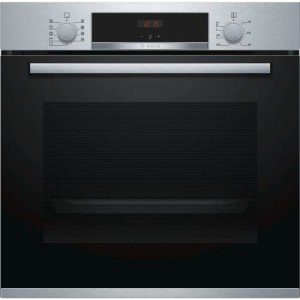The Rise of Built-In Ovens: A Seamless Approach to Modern Cooking
In modern kitchens, where design aesthetics blend flawlessly with functionality, one home appliance stands apart as a true video game changer: the built-in oven. As property owners and chefs alike continue to look for innovative services that boost their cooking experience, built-in ovens have ended up being significantly popular. This article explores the advantages, considerations, and trends surrounding built-in ovens, highlighting why they are a vital feature in contemporary cooking areas.
What is a Built-In Oven?
A built-in oven is a kitchen device developed to be integrated into the cabinetry of a kitchen instead of standing alone. Unlike traditional freestanding ovens, which can be moved and placed anywhere, built-in ovens been available in numerous styles and sizes to fit particularly within designated areas. Offered in single or double configurations, these ovens use a streamlined look that complements modern cooking area designs.
Advantages of Built-In Ovens
1. Space-Saving Design
One of the most appealing benefits of built-in ovens is their space-saving design. By integrating the oven into cabinets, you can maximize important counter and flooring area. This is especially helpful in smaller sized kitchens, where taking full advantage of space is necessary. Built-in ovens can be set up at eye level, making them more available and decreasing the need to bend down.
2. integrated ovens uk -in ovens contribute to a smooth and cohesive kitchen area style. Readily available in numerous finishes-- such as stainless steel, black, white, and customized cabinets-- they can blend perfectly into the overall design. This visual appeal improves the cooking area's visual harmony and elevates the space, producing a modern and advanced environment.

3. Improved Functionality
Lots of built-in ovens come geared up with sophisticated cooking technologies, such as convection cooking, steam ovens, and smart features. These improvements permit flexible cooking choices, making it easier to attain professional-level outcomes in the house. Smart built-in ovens can even link to Wi-Fi, allowing users to manage the oven remotely, receive alerts, and gain access to a variety of cooking programs and dishes.
4. Enhanced Ventilation
Due to the fact that built-in ovens can be integrated with kitchen area hoods and ventilation systems, they can help preserve better air quality and minimize cooking smells. This is especially significant for those who enjoy to prepare with fragrant spices and active ingredients, as an effective ventilation system can keep the kitchen comfy and welcoming.
5. Modification Options
Built-in ovens use a large range of modification choices to suit private cooking styles and requirements. From professional-grade appliances with multiple cooking modes to compact styles for smaller kitchens, property owners can pick the oven that fits their specific requirements. Lots of makers likewise provide personalized front panels, allowing you to match the oven's appearance to your cabinets for a really combined look.
Considerations When Choosing a Built-In Oven
While built-in ovens have many benefits, there are necessary factors to consider to remember before purchasing:
1. Cost
Built-in ovens normally include a greater price than their freestanding counterparts due to their style and installation requirements. It's crucial to consider both the cost of the oven and any extra expenses related to kitchen cabinetry modifications or installation.
2. Installation Requirements
Setting up a built-in oven frequently needs expert help, especially if you require to customize existing cabinetry. Ensure that you think about any costs related to installation, including labor and prospective cabinetry adjustments.
3. Size and Dimensions
Before purchasing a built-in oven, measure the designated area accurately to guarantee a correct fit. Built-in ovens can be found in numerous sizes and setups, so picking one that aligns with your requirements and kitchen design is essential.
4. Lifestyle and Usage
Consider your cooking routines and requires when picking a built-in oven. If you frequently host big gatherings, a double oven may be more helpful. On the other hand, if you have a compact cooking area, a single-wall oven may be enough.
Patterns in Built-In Ovens
The cooking area device market is constantly evolving, and built-in ovens are not exempt from emerging trends. Some existing patterns consist of:
Smart Technology Integration: With the increase of smart home innovation, built-in ovens now typically feature connectivity choices. This allows users to keep track of cooking development and adjust settings via mobile apps.
Energy Efficiency: As sustainability becomes a top priority, many manufacturers are investing in energy-efficient built-in ovens that lower energy intake while keeping efficiency.
Multi-functional Designs: Built-in ovens now use functions such as air frying, slow cooking, and steaming, providing adaptability that meets a wide variety of cooking methods.
Conclusion
Built-in ovens undoubtedly represent a best mix of style, function, and convenience in today's kitchens. As more property owners go with this modern-day solution, the focus moves to producing a cooking area that is as visually pleasing as it is practical. Whether you are developing a brand-new home or renovating your cooking area, thinking about a built-in oven might raise your culinary experience and change your kitchen into an elegant and functional sanctuary. With a variety of alternatives readily available and continuous innovations in innovation, built-in ovens stay a standout choice for both novice cooks and cooking enthusiasts alike.
